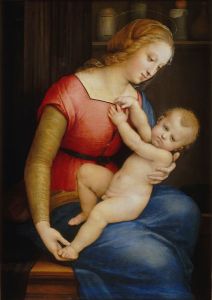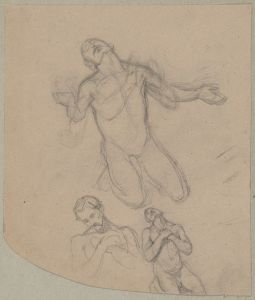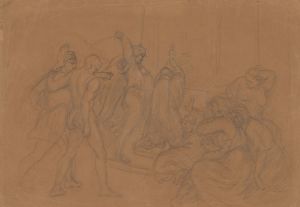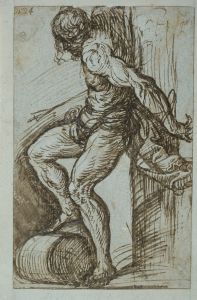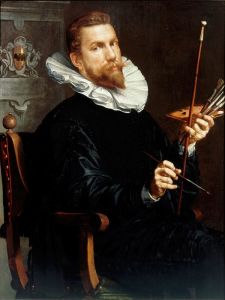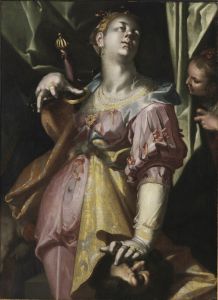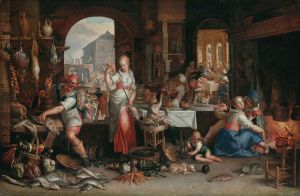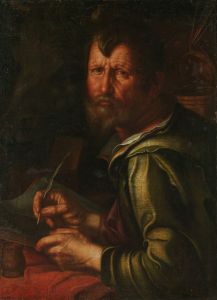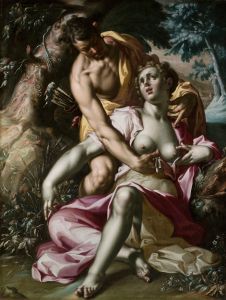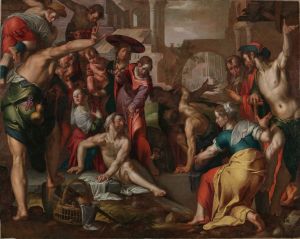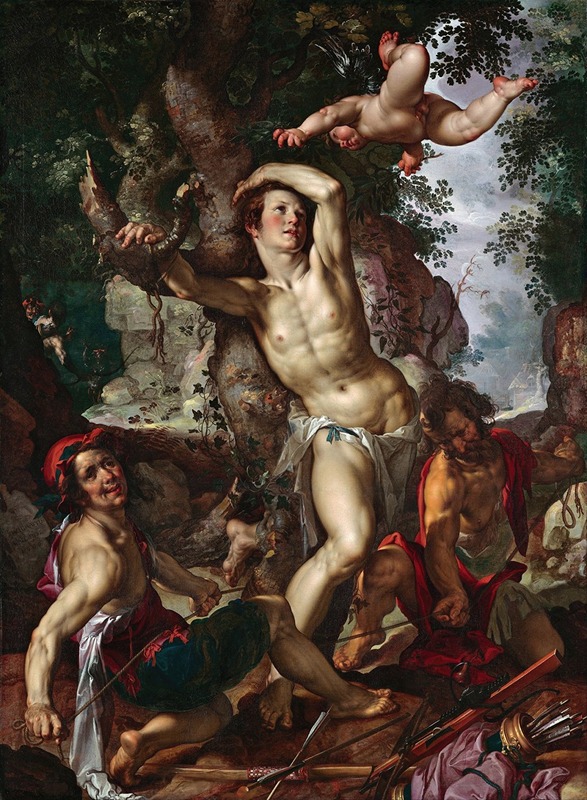
The Martyrdom Of Saint Sebastian
A hand-painted replica of Joachim Wtewael’s masterpiece The Martyrdom Of Saint Sebastian, meticulously crafted by professional artists to capture the true essence of the original. Each piece is created with museum-quality canvas and rare mineral pigments, carefully painted by experienced artists with delicate brushstrokes and rich, layered colors to perfectly recreate the texture of the original artwork. Unlike machine-printed reproductions, this hand-painted version brings the painting to life, infused with the artist’s emotions and skill in every stroke. Whether for personal collection or home decoration, it instantly elevates the artistic atmosphere of any space.
Joachim Wtewael, a Dutch Mannerist painter, is known for his intricate and highly detailed works, often depicting mythological and religious subjects. One of his notable paintings, The Martyrdom of Saint Sebastian, exemplifies his mastery of the Mannerist style, characterized by elongated figures, vibrant colors, and dramatic compositions.
The painting portrays the martyrdom of Saint Sebastian, a Christian saint and martyr who was traditionally believed to have been a Roman soldier. According to Christian tradition, Sebastian was tied to a tree or post and shot with arrows as punishment for his faith, though he miraculously survived this ordeal. Wtewael's depiction captures the moment of Sebastian's suffering, emphasizing the physical and emotional intensity of the scene.
In this work, Wtewael demonstrates his skill in rendering the human form with anatomical precision while adhering to the exaggerated proportions typical of Mannerism. The composition is dynamic, with Sebastian's body positioned in a twisting pose that highlights his vulnerability and resilience. The surrounding figures, likely Roman soldiers, are depicted in active stances, adding to the tension and drama of the scene.
Wtewael's use of color is another striking feature of the painting. He employs a rich palette, with vivid reds, blues, and golds, to draw attention to key elements of the composition. The interplay of light and shadow enhances the three-dimensionality of the figures and creates a sense of depth within the scene.
The painting also reflects the religious and cultural context of the late 16th and early 17th centuries, a period marked by the Counter-Reformation. During this time, artworks depicting saints and martyrs were intended to inspire devotion and reinforce Catholic values. Wtewael's The Martyrdom of Saint Sebastian aligns with this tradition, offering a visual narrative that underscores themes of faith, sacrifice, and divine intervention.
While Joachim Wtewael is primarily associated with the Utrecht School of painting, his works, including The Martyrdom of Saint Sebastian, stand out for their meticulous detail and adherence to Mannerist aesthetics. This painting remains an important example of his artistic legacy and contributes to our understanding of religious art during the Dutch Golden Age.
Further details about the specific provenance, current location, or exact date of creation of The Martyrdom of Saint Sebastian by Wtewael are not widely documented.





